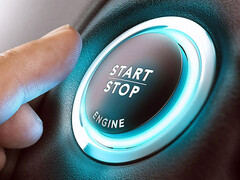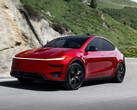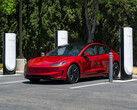Drivers with mixed feelings about the start-stop system that automakers use to strengthen their environmental street cred will be delighted to hear that the government might be removing it altogether.
The current EPA head has posted that start-stop is there so that manufacturers can score a "climate participation trophy" but "everyone hates it." The system is designed to shut the engine off at long idle and then restart it when the driver steps on the gas.
Depending on the body that has done the testing, a start-stop system can drop a vehicle's fuel consumption anywhere between 4%-26%, depending on traffic and driving habits. The EPA itself cites a modest 4%-5% in fuel savings on average, while SAE tests with four vehicles returned up to 26% lower consumption if they are driven in the so-called New York City Cycle (NYCC) scenario.
While some arguments against the start-stop system are debatable, others are completely valid. Currently, about 65% of new cars come with start-stop technology out of the factory and the claims that it puts undue strain on the starter, battery, or engine are somewhat overblown, as the system is designed for frequent restarts.
Depending on the manufacturer, however, and whether it is installed in a hybrid or not, the system can be jerky and hesitant. While these are relatively minor annoyances, the fact that acceleration is delayed compared to an idling engine and that the A/C may not work during long red lights in the sweltering heat, for instance, make some drivers hate it with passion.
Unfortunately, there is no way to turn the start-stop system permanently off. It has to be manually disabled each time one drives their vehicle, which can quickly become annoying for those whose driving routine would return negligible fuel savings. Some have been desperate enough to resort to third-party solutions like the 4D Tech Auto Start Stop Eliminator in order to go around the requirement.
The EPA likely plans to discard the environmental credits that go with installing a start-stop technology, and thus disincentivize manufacturers from equipping their vehicles with one. It remains to be seen if automakers will follow, though, and whether they will remove the whole start-stop system from new vehicles, or simply provide a more permanent way to override it.
Source(s)
Lee Zeldin (X)









